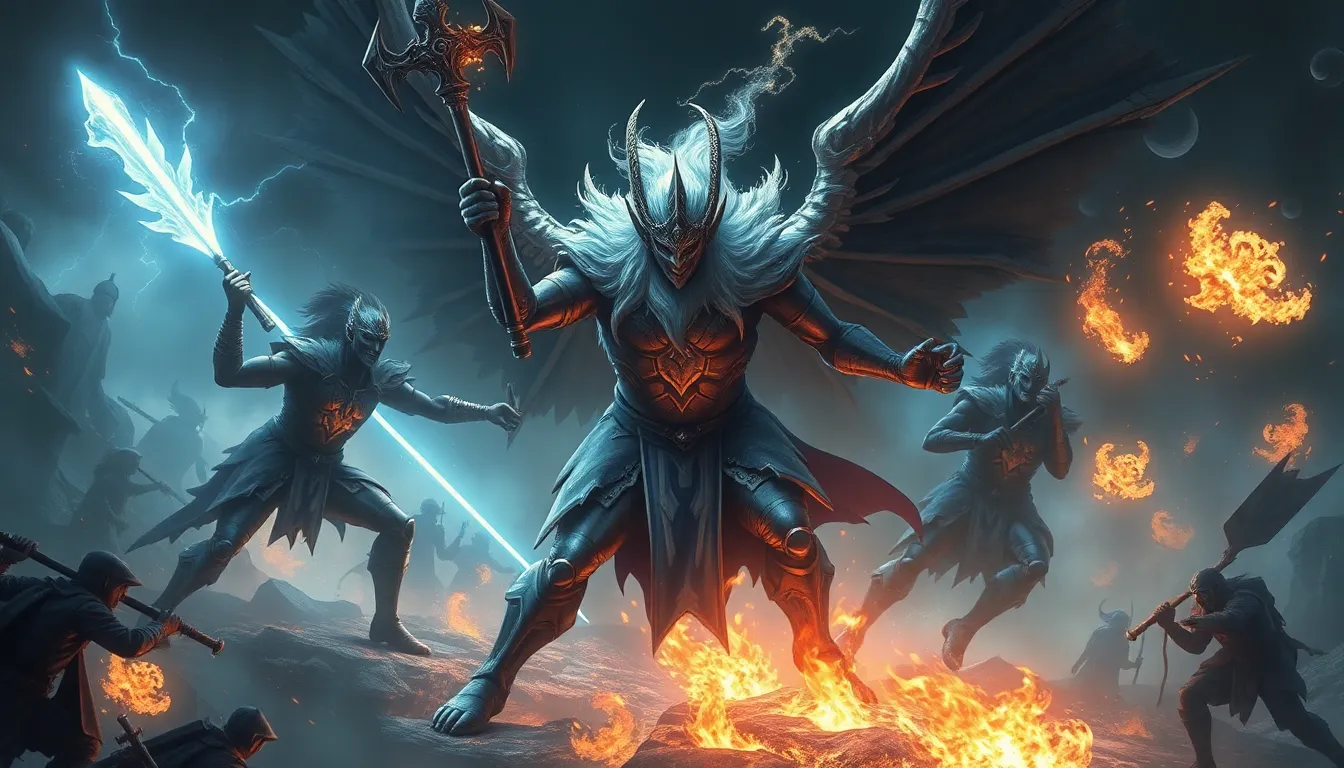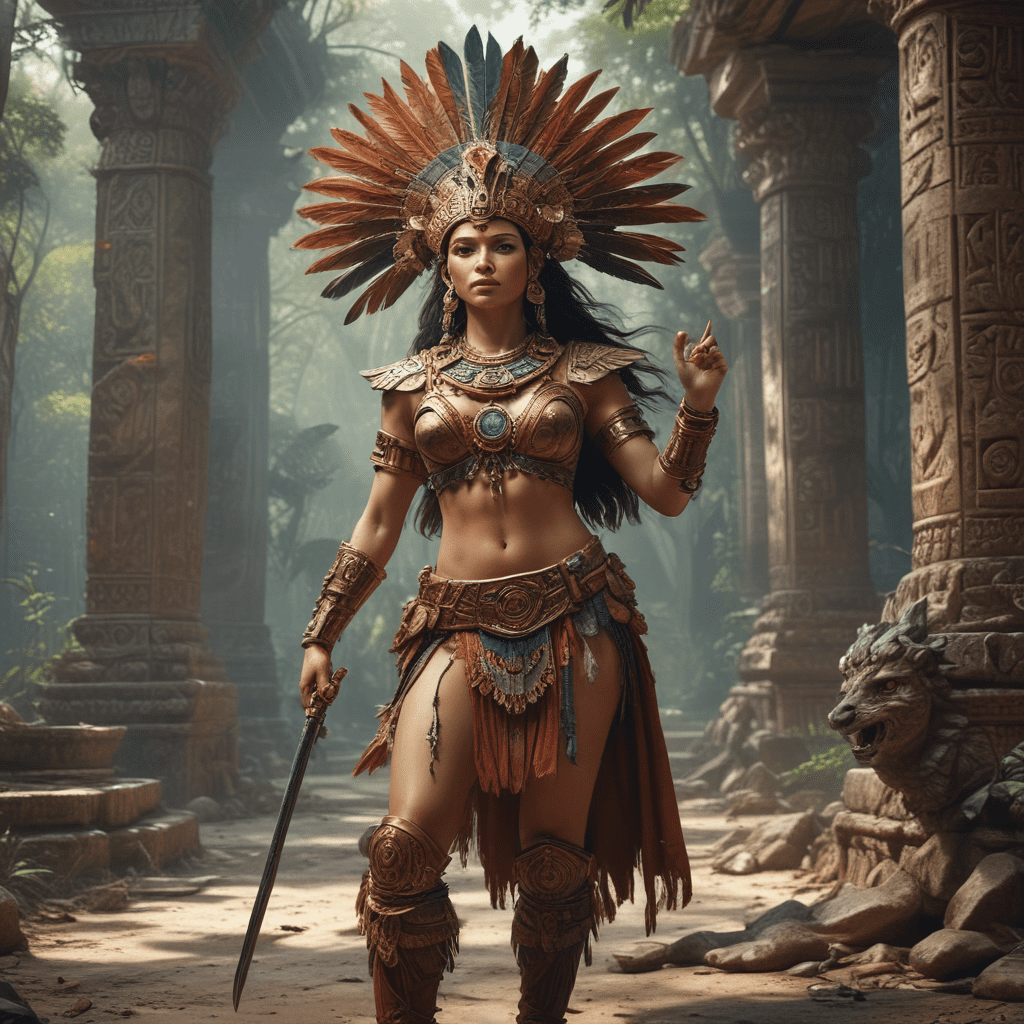Godly Warfare: The Most Epic Battles of Myths and Legends
I. Introduction to Godly Warfare
Godly warfare refers to the epic battles fought between deities or between gods and mortals in various mythological contexts. These conflicts often symbolize larger cosmic struggles, embodying the struggle between good and evil, order and chaos. They play a crucial role in shaping cultural narratives, providing moral lessons, and defining the relationships between divine beings and humanity.
This article will explore significant battles across various mythologies, highlighting their importance and the lessons they impart. From Greek Titanomachy to Norse Ragnarok, from the Indian epics of Ramayana and Mahabharata to the Aztec wars led by Huitzilopochtli, we will delve into the most iconic godly warfare scenarios that have captivated human imagination for centuries.
II. The Cosmic Battle: Titans vs. Olympians in Greek Mythology
In Greek mythology, the Titans were the elder gods who ruled during the Golden Age, while the Olympians, led by Zeus, were their descendants who sought to overthrow them. The clash between these two generations of deities is known as the Titanomachy.
The Titanomachy was ignited by the Titans’ oppressive rule and their refusal to yield power to the new generation. As the Olympians allied with other forces, including the Cyclopes and the Hecatoncheires, the stage was set for a monumental battle for the fate of the cosmos.
- Key Figures:
- Zeus: The leader of the Olympians who eventually defeated Cronus, the Titan king.
- Cronus: The leader of the Titans who swallowed his children to prevent them from overthrowing him.
- Prometheus: A Titan who sided with the Olympians and ultimately helped humanity.
The Titanomachy ended with the defeat of the Titans, who were imprisoned in Tartarus, marking the rise of the Olympians as the new rulers of the universe. This battle not only reshaped Greek mythology but also set the stage for future myths, reflecting themes of rebellion, justice, and the cyclical nature of power.
III. The Clash of the Gods: Ragnarok in Norse Mythology
Ragnarok, often referred to as the “Twilight of the Gods,” is a series of events foretold to lead to the death of many gods, including Odin, Thor, and Loki, and the submersion of the world in water. It represents the ultimate cosmic battle between the forces of order and chaos.
The key characters involved in Ragnarok include:
- Odin: The chief god who sacrifices himself for knowledge.
- Thor: The god of thunder, known for his strength and bravery.
- Loki: The trickster god who plays a crucial role in the events leading to Ragnarok.
The significance of Ragnarok lies not only in the catastrophic battles that ensue but also in the rebirth of the world that follows. After the destruction, a new world rises, symbolizing renewal and hope. Modern interpretations in literature, film, and video games continue to draw upon this epic narrative, showcasing its enduring impact on popular culture.
IV. The Great War of the Ramayana: Rama vs. Ravana
The Ramayana is one of the two major Sanskrit epics of ancient Indian literature, detailing the life of Prince Rama and his battle against the demon king Ravana. This conflict is not merely a battle of strength but embodies the struggle between dharma (righteousness) and adharma (unrighteousness).
The background of Rama and Ravana’s conflict is rooted in Ravana’s abduction of Sita, Rama’s wife. This act incites Rama to wage war against Ravana to rescue her and restore dharma.
- Key Events Leading Up to the Battle:
- Rama’s alliance with Hanuman and the monkey army.
- The construction of the bridge to Lanka.
- The gathering of various allies to fight against Ravana.
The climactic battle between Rama and Ravana is filled with moral themes, such as loyalty, honor, and the consequences of one’s actions. The Ramayana teaches valuable lessons about the importance of duty and righteousness, making it a timeless narrative in Hindu culture.
V. The Divine Duel: The Mahabharata and the Kurukshetra War
The Mahabharata, another great Indian epic, depicts the story of the Kurukshetra War, a monumental conflict between the Pandavas and Kauravas. This epic is not only a tale of warfare but also encompasses profound philosophical teachings and moral dilemmas.
The key players in this grand saga include:
- The Pandavas: The five brothers who represent righteousness.
- The Kauravas: Their cousins, who embody greed and ambition.
- Krishna: The divine charioteer who guides Arjuna and plays a crucial role in the war.
As the battle unfolds, various strategies and divine interventions shape the course of the war. The Bhagavad Gita, a section of the Mahabharata, captures the philosophical discourse between Krishna and Arjuna, addressing the moral complexities of war and duty.
The Kurukshetra War serves as a profound exploration of human nature, ethics, and the balance between fate and free will, solidifying its place in Hindu thought.
VI. The Siege of Troy: Gods and Mortals in Conflict
The Trojan War, a legendary conflict between the city of Troy and the Achaeans (Greeks), is steeped in mythological significance. It showcases the interplay between divine beings and mortals, as gods such as Athena, Hera, and Aphrodite take sides in the battle.
The role of divine beings is pivotal, as they influence the outcomes of major battles and the fates of key characters. Major turning points in the siege include:
- The abduction of Helen by Paris.
- The involvement of Achilles and his wrath.
- The cunning of Odysseus leading to the fall of Troy.
The interplay between fate and free will is a central theme in the Trojan War. While the gods manipulate events, mortals still make choices that lead to their destinies, creating a rich tapestry of narrative and moral inquiry.
VII. Aztec Warfare: Huitzilopochtli and the Gods of War
In Aztec mythology, Huitzilopochtli is the god of war and the sun, playing a crucial role in the culture’s understanding of warfare. The Aztecs believed that warfare was a necessary act to appease the gods and ensure the continuation of the world.
The significance of warfare in Aztec culture can be seen in their rituals and societal structure, where battles were often fought to capture enemies for sacrificial offerings. Key mythical battles include:
- The struggle against the forces of darkness led by the goddess Coyolxauhqui.
- The battles fought to secure the Aztec Empire’s dominance.
The connection between warfare and religious practices is profound, illustrating how the Aztecs viewed conflict as a sacred duty that aligned with their beliefs about creation and the cosmos.
VIII. Celtic Myth
Celtic mythology is rich with tales of epic battles and heroic figures, often intertwined with the supernatural. The battles in Celtic myths frequently involve gods, heroes, and supernatural beings, reflecting the culture’s values and beliefs.
One of the most notable conflicts is the Táin Bó Cúailnge, where the hero Cú Chulainn defends Ulster against the armies of Connacht. This tale showcases themes of bravery, honor, and the tragic consequences of war.
- Key Aspects of Celtic Battles:
- The involvement of magical elements and deities.
- The emphasis on personal honor and kinship.
- The representation of nature and the land as active participants in the conflict.
Celtic myths often portray battles as a means of achieving glory and honor, serving as a reflection of the warrior culture prevalent in ancient Celtic societies.
IX. Conclusion
Godly warfare in myths and legends serves as a powerful narrative device that illustrates the struggles between good and evil, order and chaos, and the human condition’s complexities. Through epic battles, these stories impart moral lessons, cultural values, and a deeper understanding of the divine


